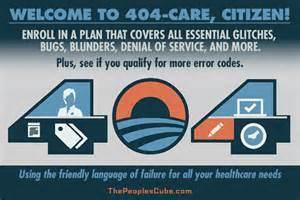
Seattle Times: About 8,000 Washington residents who are purchasing health insurance on the state’s fledgling exchange marketplace may be getting less of a subsidy than they thought they had coming to help pay for it.
The exchange, called the Washington Healthplanfinder, said Friday that a calculator on its website mistakenly overestimated tax credits for about 6,000 applications that cover about 8,000 people, said Michael Marchand, communications director at the Washington Health Benefit Exchange, which operates Healthplanfinder.
The error represents a setback for the state-run exchange, which has received favorable reviews once it got up and running as one of the few online marketplaces established under the Affordable Care Act that has a functioning website and is posting strong enrollment figures.
“The exchange is very disappointed to have discovered this issue, and we find the situation unacceptable,” exchange CEO Richard Onizuka said in a statement. “Our staff will not stop working until we have notified all those affected and helped each and every one of our customers to ensure they have the correct tax-credit amount and can choose the best plan to meet their needs and budget.”
The discrepancy between the tax-credit amount that the website calculated for some people and the amount they are actually eligible to receive varies by applicant, said Michael Marchand, communications director at the Washington Health Benefit Exchange, which operates Healthplanfinder. “For some people, it’s pennies a month. For others, it’s much more,” he said.
However, the difference appears to be greater for applicants with higher incomes, who are supposed to receive smaller tax credits than those with lower incomes, Marchand said.
Under the Affordable Care Act, the tax credits are applied toward payment of premiums for insurance purchased on the exchange. Eligibility is based on a sliding scale that takes into account both income level and household size.
The problem that was causing Healthplanfinder to miscalculate tax credits came down to a system error.
Healthplanfinder asked applicants to submit their monthly income on their application. It then sent that information to the Federal Data Hub, which combines data from several agencies to determine an applicant’s eligibility for financial assistance to purchase coverage through the exchange.
But the federal hub was expecting annual income to be reported, not monthly income, Marchand said.
So when applicants reported their monthly income, the federal hub interpreted that as annual income, and the tax credit was calculated on that basis. “As a result, what was coming back to us was not accurate,” Marchand said.
The problem came to light within 10 days of the website’s Oct. 1 launch. The exchange staff began to get reports from the field and the exchange’s customer-service center that consumers were qualifying for higher-then-expected tax credits, Marchand said. “We were able to see right away, statistically, that something was off,” Marchand said.
The exchange’s information-technology staff discovered the root cause of the problem Tuesday and was able to fix it within 24 hours, during regularly scheduled maintenance that was performed overnight.
By Thursday, they tested it and determined it had worked, Marchand said. “We feel quite fortunate that we were able to act immediately and that it’s no longer an issue for future applicants.”
But now the issue is how to fix the problem for people who received inaccurate tax-credit amounts. About 3,400 of the people who are affected have completed the enrollment process, including selecting a health plan and submitting payment information.
“We’re working on finding a solution to resolve the issue for them,” Marchand said.
The exchange plans to notify all of the customers who are affected by the error and correct the inaccurate information, Marchand said.
“Right now, the big thing is working with those individuals to make sure they understand how this has affected them, what their options are, and help them move forward so they can ultimately purchase a health-insurance plan that best fits their needs and budget,” he said.
As of Monday, more than 35,500 Washington residents have completed their enrollment in health insurance through the exchange, for coverage that begins Jan. 1. About 31,000 of them have signed up for Medicaid; the others have signed up for qualified health plans sold by insurance carriers.
An additional 56,000 residents have completed applications that are just missing payment information. The first monthly premium is not due until Dec. 23. An additional 14,000 have completed applications for Medicaid.
Marchand said he wasn’t aware of any other issues on the site. “To date we haven’t seen anything at this level or as prevalent as this issue,” he said. “But we remain super-diligent about analyzing what’s coming in so that we can get out in front of any issue and correct it.”
DCG

